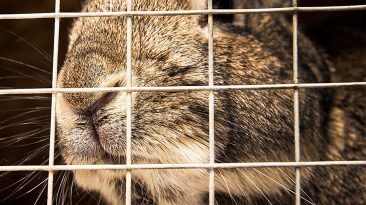It starts with a simple cough, and before you know it, millions of people are infected. And it won’t stop there.
It could keep growing and growing until billions of people are sick. Flights are canceled, cities are quarantined, and hospitals are flooded with patients.
This is what’s known as a global pandemic. Could we experience something like this? How would a pandemic affect civilization?
How does something like this happen? And how could you avoid it?
A worldwide pandemic like this wouldn’t be new to the human race. It happened in 1918 and was known as the Spanish flu.
It infected about one-third of the global population and killed an estimated 50 million people. So before we start completely freaking out about the end of the world, you can take a bit of comfort in knowing this most likely doesn’t mean the end of civilization. But that doesn’t mean there won’t be consequences.
Before we get to what might happen, how does a pandemic start anyways? The widely spread epidemics in the past, like the Spanish Flu as well as SARS in 2003, began with a strain of influenza, or the flu.
There are two main types of influenza. Type A typically comes from animals, including birds, cats, pigs and horses. And type B viruses are only common among humans.
The symptoms of a virus like this are things we’ve all experienced – runny nose, fever, headache, and just general cold symptoms. But in other cases, influenza can also result in respiratory issues, kidney failure or even death – but keep in mind those aren’t guaranteed to happen.
A disease like this could infect over 2.5 billion people. Why so many?
Well, the main thing about these influenza strains is that they can be carried through the air. If someone has it and breathes in your direction, you could breathe in microscopic water droplets carrying the virus. Or, if you touch a surface that has the virus on it and then touch your face, you could also catch the disease.
You might not even feel the symptoms of influenza right away. It could take a few hours or even up to two weeks. This means you’d be interacting with people as usual and unknowingly be infecting them.
And today the world is a lot different than it was during 1918’s Spanish Flu. In addition to the world’s population being much higher, we also live very differently.
Cities are much more dense, with places like Mumbai having over 76,000 people per square mile. With people living closer together, it means we can infect each other more easily.
Not only that, but we travel the world with ease now. People who unknowingly carry a virus can quickly bring it to the other side of the world. If this new virus were to spread to just a single person, who spread it to another single person and another, and another.
As time went on, it would eventually infect millions. As people got infected, planes would be grounded, and entire countries could be quarantined. If it got bad enough, we might not even be able to leave our homes due to the risk of infecting people or getting infected ourselves.
Getting help at a hospital could be difficult too. With billions of people infected, it’s unlikely hospitals would be able to care for everyone. If we’re dealing with a pandemic that spreads the same way as the Spanish flu did, we could anticipate anywhere between 200 to 425 million deaths.
And that’s out of the approximately 2.5 billion people who would be infected. But how likely is it that a scenario like this will happen?
Well, it’s hard to say. Experts say that humanity is due for a massive pandemic. It happened 100 years ago with the Spanish flu, and before that with the bubonic plague in 1347 – 1351. Unfortunately, pandemics like these are just a reality of human civilization.
But that doesn’t mean a pandemic today would be as bad as the Spanish flu. Although disease might spread more efficiently than ever before, it also might be easier than ever to cure it.
Although a pandemic implies that you’ll have little immunity to it, doctors could develop a vaccine for it. Today, with increased technology and communication being more seamless than ever, the worlds scientists could work together. You could have doctors in New York talking with researchers in China trying to solve a pandemic.
It definitely wouldn’t be easy and could take up to a year, but eventually, a vaccine could be invented. The next issue would be how it gets distributed. If countries aren’t willing to work together and distribute the vaccines fairly, it could cause some serious conflict. But assuming they all do work together, it could eventually stop the pandemic.
Hopefully, something like this won’t happen in the first place. After all, we’re now better at monitoring animals and their diseases than ever before. And by knowing the consequences of a real pandemic, hopefully, we can stop the spread of infections before they go any further.
So how can you avoid something like this? Well, according to health experts, the rules are pretty simple. Similar to avoiding the common cold, you should wash your hands often and keep away from people coughing and sneezing.
And if you’re feeling sick, you should definitely see a doctor right away and also cough and sneeze into an elbow or tissue. So although everybody doesn’t have to die in this scenario, it would have a severe impact on people. And unless the world is willing to work and cooperate together, the realities of this happening could be pretty grim.
Subscribe to What-If on YouTube or follow the show on Facebook Watch.
Sources
- “Coronavirus infection: Symptoms and treatment”. Canada, Public. 2020. canada.ca. Accessed February 3 2020.
- “Spanish Flu”. 2020. HISTORY. Accessed February 3 2020.
- “A century on, why are we forgetting the deaths of 100 million?”. Kettle, Martin. 2018. The Guardian. Accessed February 3 2020.
- “Pandemic Risk: How Large Are The Expected Losses?”. Fan, Victoria Y, Dean T Jamison, and Lawrence H Summers. 2018. Bulletin Of The World Health Organization 96 (2): 129-134. WHO Press. doi:10.2471/blt.17.199588.
- “World not prepared for the next big pandemic: report”. LESLIE YOUNG, 2020. Global News. Accessed February 3 2020.
- “Spanish flu: the killer that still stalks us, 100 years on”. Honigsbaum, Mark. 2018. The Guardian. Accessed February 3 2020.
- “Coronavirus”. 2020. who.int. Accessed February 3 2020.
- “The Chinese Coronavirus Is Not the Zombie Apocalypse”. Robert Bartholomew, 2020. Psychology Today. Accessed February 3 2020.



























